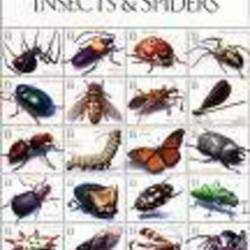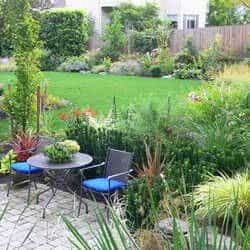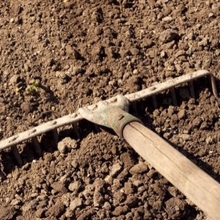How IPM works.
IPM can be a simple plan or quite sophisticated in large farming operations. There are 6 steps in an IPM program.
1. Acceptable Pest Levels determine whether or not the quantity of pests on your plants requires any attention at all. Do a few aphids or slugs require action?
Is a sizeable portion of my crop endangered and needs immediate attention?
2. Preventive cultural practices When selecting varieties to plant in your garden, select varieties that are disease resistant. A healthy plant is your first line of defense. A good example of this, we all love to grow heirloom tomatoes. We have to understand that heirlooms are much more susceptible to disease than newer hybrids.
3. Monitoring One of the most important aspects of IPM. Visual inspections on a frequent basis. Insect traps placed in the garden to determine what “bugs” are in the area. It’s also important to keep good records from year to year.
4. Mechanical Controls If pest levels reach unacceptable levels your first choice should be mechanical. Hand picking, traps, floating row covers and vacuuming are just a few methods to try.
5. Biological Controls Beneficial insects are becoming more readily available each year. Lacewings, lady Beetles are very effective at controlling certain types of insects. Many times ordinary dish soap mixed with a little corn oil in a spray bottle will be enough to deter insects. Corn gluten in a very good biological control.
6. Chemical Controls Are a last resort in the IPM scheme of things. They may be used when previous methods have failed or seem unlikly to control the problem. When using chemical controls use the least toxic first. For example use chemicals derived from plants first, such as neem oil, rotenone , or Bt.
IPM applies to all types of gardening, as you gain more experience the steps will become almost automatic. IPM is an excellent practice for organic gardeners; you just eliminate the chemical control steps. By using IPM you improve the environment and reduce human exposure to chemicals.
Here are some controls that can be used in your garden that follow IPM guidelines.
Flying Insects Use yellow stick traps.
Floating row covers
Slugs Bury a tuna can so that the top is level with the ground. Fill with beer, the yeast in the beer attract the slugs they fall in and drown. Must empty it each morning
Lay several layers of damp newspapers near where slugs have been observed in the evening. The next morning retrieve the paper; pick off the slugs and dispose of in soapy water.
Aphids,
Mealy Bugs
Scale
Leaf Hoppers Spray with horticultural oil
Spray with insecticidal soap
Woodchucks
Voles
Rabbits Make up a spray of hot peppers, dish soap and corn oil. This will deter them from feeding on your plants
Powdery Mildew Spray with baking soda and water
Weeds Spray with Horticultural Vinegar 20% acidity.
As you can see there are quite a few actions that you can take to control
problems without the use of chemicals.
Paul’s Garden Tip
If you’re like me I often lay my tools down in the garden and can’t seem to locate them. I’ve solved this problem by painting the handles a bright color. Since that time it’s much easier to find e my tools. When I buy a new tool I immediately paint it before using it.

(Editor's Note: This article was originally published on August 6, 2007. Your comments are welcome, but please be aware that authors of previously published comments may not be able to respond to your questions.)

















